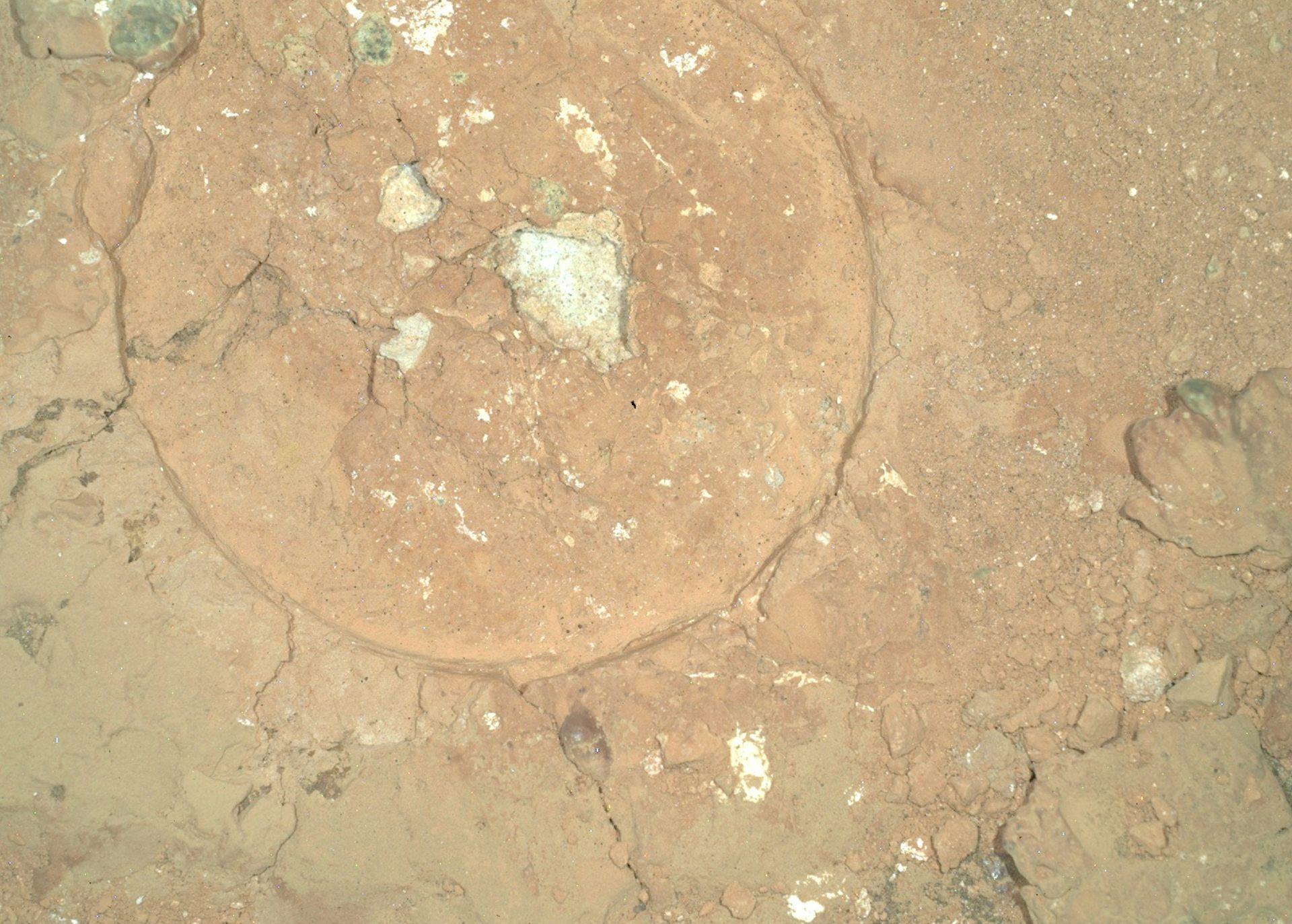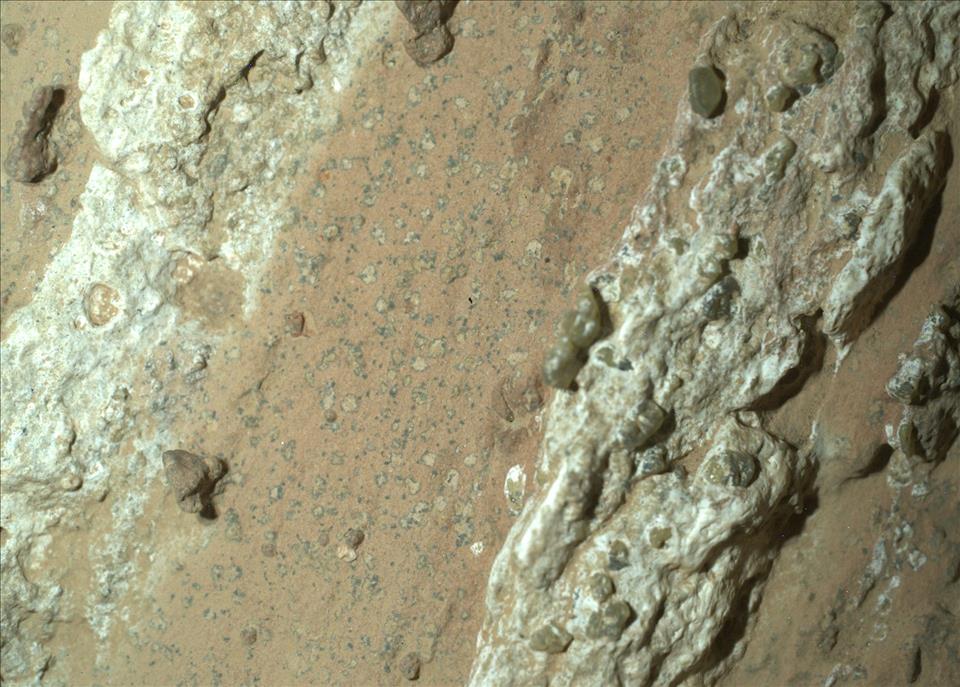Signs Of Ancient Life May Have Been Found In Martian Rock New Study
The bottom line is this: it might be life, but we won't know for sure until we return the samples to Earth. Perseverance has already collected a fragment of the relevant rock - we just have to go and get it.
Indeed, Nasa has been working with the European Space Agency on a mission to go to Mars, retrieve the samples of rock collected by Perseverance and deliver them to Earth. This would include the sample from the rock that's the subject of the Nature study. However, the mission, known as Mars Sample Return , has run into trouble because of rising costs .
In mid-2024, the Perseverance rover encountered a block of ancient mudstone, nicknamed Cheyava Falls, distinguished by its brick-red hue. This rock was laid down by water roughly four billion years ago. While most Martian rocks appear red due to a coating of oxidised (ferric) iron dust, Cheyava Falls is red through and through – the ferric iron is in the rock itself.
More intriguingly, Cheyava Falls is peppered with dozens of tiny pale spots, typically less than a millimetre across. These spots are fringed with a dark phosphorus-rich mineral, which also appears as tiny dots called poppy seeds that are scattered between the other spots. Associated with this mineral are traces of ancient organic compounds. (Organic compounds contain carbon and are fundamental to life on Earth, but they also exist in the absence of biology.)
What does this have to do with life?All living organisms on Earth harness energy through oxidation-reduction (redox) reactions – transferring electron particles from chemicals known as reductants to compounds named oxidants. On Earth, for example, structures called mitochondria in animal cells transfer electrons from glucose (a reductant) to oxygen (an oxidant). Some rock dwelling bacteria use other kinds of organic compound instead of glucose, and ferric iron instead of oxygen.

A rock dubbed Serpentine Rapids also showed features reminiscent of reduction spots. Nasa JPL-Caltech
When ferric iron is reduced to a different form, known as ferrous iron, it becomes soluble in water and either leaches away or reacts to form new, lighter-coloured minerals. The result is that many red rocks and sediments on Earth contain small bleached spots –“reduction spots” – strikingly similar to those found in Cheyava Falls. In fact, Perseverance subsequently spotted bleached features even more reminiscent of reduction spots at a site called Serpentine Rapids , but spent too little time there to analyse them and, unfortunately, didn't collect any samples.
The new Nature paper builds on abstracts presented at the Lunar and Planetary Science Conference, held in Houston in March 2025, but with more detail and the added weight of peer review. It confirms that the pale spots are associated with organic matter, and that they contain ferrous iron and sulphur – specifically, an iron-sulphide mineral.
The most plausible interpretation is that redox reactions occurred within the rock after it formed, transferring electrons from organic matter to ferric iron and sulphate, and producing bleached zones where ferric iron was depleted.
Perseverance with the Cheyava Falls rock. Nasa JPL-Caltech
Notably, these reactions – especially sulphate reduction – don't typically occur at the low temperatures this rock experienced over its history. Unless microbes are involved, that is. Microbial oxidation of organic matter can also produce phosphate minerals, like those found at Cheyava Falls.
Without getting samples back to laboratories on Earth, there's only so much we can really know about what happened at Cheyava Falls four billion years ago. Even so, no entirely satisfying non-biological explanation accounts for the full suite of observations made by Perseverance.
The new paper does a good job of making this clear, considering the possibilities one by one. But in astrobiology, the lack of a non-biological explanation isn't where life detection ends – it's where it begins . History tells us that when we can't think of a non-biological explanation for something, it's usually not because there isn't one. It's just that we haven't thought of it yet.
So what happens next? First, astrobiologists around the world must explore which oxidation-reduction reactions involving iron, sulphur, organic compounds, and phosphate can occur with and without biology under conditions relevant to Cheyava Falls.
Second, Nasa and other space agencies must provide bold leadership on the Mars Sample Return mission. Yes, it will be expensive – possibly tens of billions of dollars – but the payoff could be the most important scientific discovery ever made.

Legal Disclaimer:
MENAFN provides the
information “as is” without warranty of any kind. We do not accept
any responsibility or liability for the accuracy, content, images,
videos, licenses, completeness, legality, or reliability of the information
contained in this article. If you have any complaints or copyright
issues related to this article, kindly contact the provider above.
Most popular stories
Market Research

- Bitmex And Tradingview Announce Trading Campaign, Offering 100,000 USDT In Rewards And More
- TOKEN2049 Singapore Breaks Records: 25,000 Attendees At The World's Largest Web3 Event
- Daytrading Publishes New Study On The Dangers Of AI Tools Used By Traders
- Next Generation Management Corp. (OTC: NGMC) Announces Strategic Shift Toward Digital Commerce Acquisitions
- What Is The Growth Rate Of The Europe Baby Food And Infant Formula Market In 2025?
- What Does The Europe Cryptocurrency Market Report Reveal For 2025?





















Comments
No comment